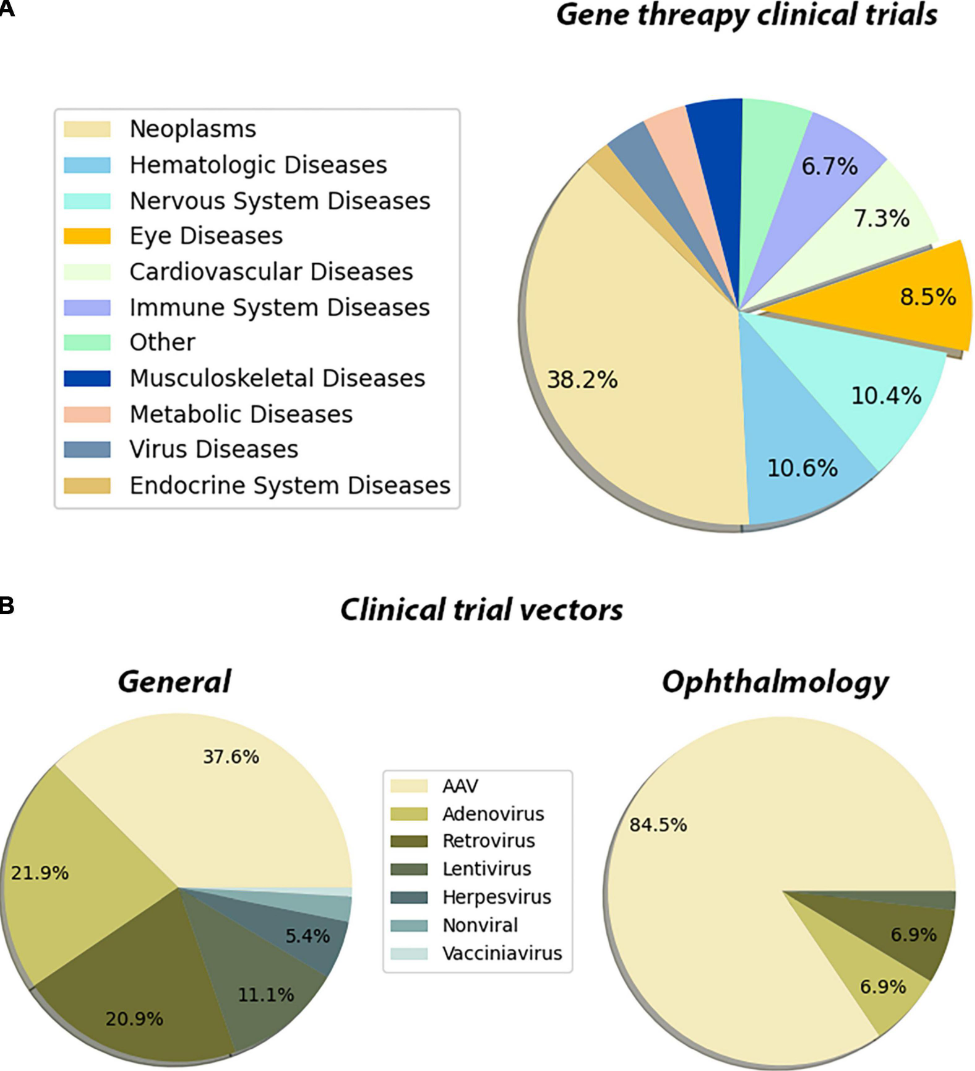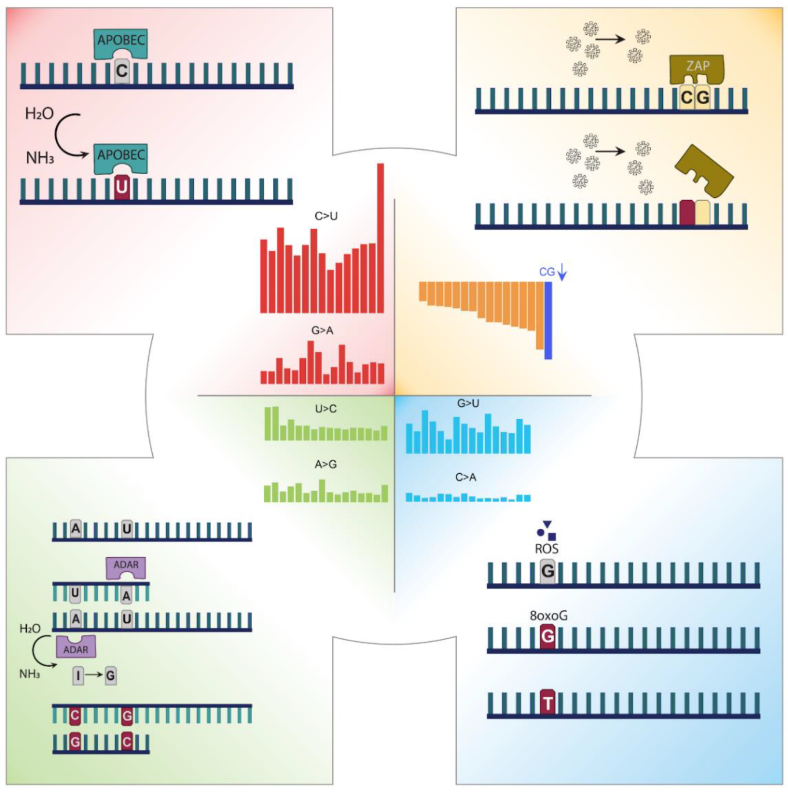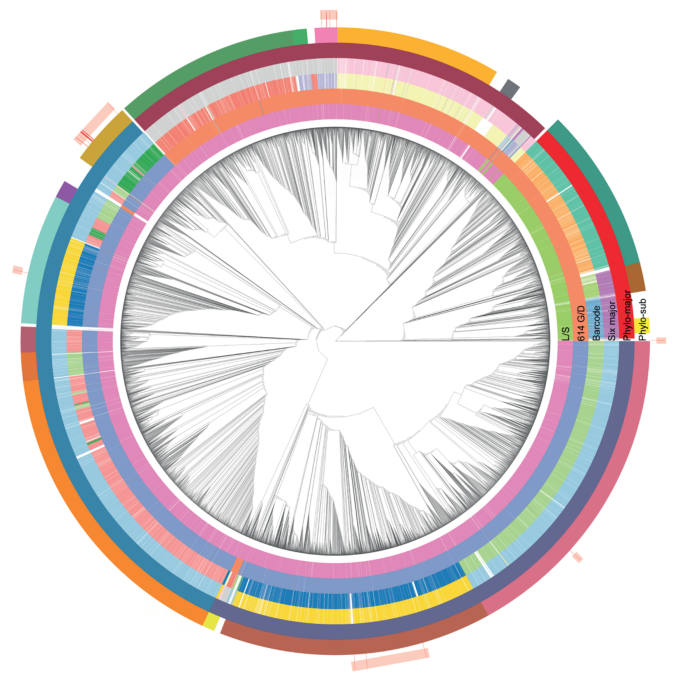Publications
Published papers in peer-reviewed journals.
2022
- Gene regulatory and gene editing tools and their applications for retinal diseases and neuroprotection: From proof-of-concept to clinical trialFrontiers in Neuroscience, 2022
Gene editing and gene regulatory fields are continuously developing new and safer tools that move beyond the initial CRISPR/Cas9 technology. As more advanced applications are emerging, it becomes crucial to understand and establish more complex gene regulatory and editing tools for efficient gene therapy applications. Ophthalmology is one of the leading fields in gene therapy applications with more than 90 clinical trials and numerous proof-of-concept studies. The majority of clinical trials are gene replacement therapies that are ideal for monogenic diseases. Despite Luxturna’s clinical success, there are still several limitations to gene replacement therapies including the size of the target gene, the choice of the promoter as well as the pathogenic alleles. Therefore, further attempts to employ novel gene regulatory and gene editing applications are crucial to targeting retinal diseases that have not been possible with the existing approaches. CRISPR-Cas9 technology opened up the door for corrective gene therapies with its gene editing properties. Advancements in CRISPR-Cas9-associated tools including base modifiers and prime editing already improved the efficiency and safety profile of base editing approaches. While base editing is a highly promising effort, gene regulatory approaches that do not interfere with genomic changes are also becoming available as safer alternatives. Antisense oligonucleotides are one of the most commonly used approaches for correcting splicing defects or eliminating mutant mRNA. More complex gene regulatory methodologies like artificial transcription factors are also another developing field that allows targeting haploinsufficiency conditions, functionally equivalent genes, and multiplex gene regulation. In this review, we summarized the novel gene editing and gene regulatory technologies and highlighted recent translational progress, potential applications, and limitations with a focus on retinal diseases.
2021
- The mutation profile of SARS-CoV-2 is primarily shaped by the host antiviral defenseViruses, 2021
Understanding SARS-CoV-2 evolution is a fundamental effort in coping with the COVID-19 pandemic. The virus genomes have been broadly evolving due to the high number of infected hosts world-wide. Mutagenesis and selection are two inter-dependent mechanisms of virus diversification. However, which mechanisms contribute to the mutation profiles of SARS-CoV-2 remain under-explored. Here, we delineate the contribution of mutagenesis and selection to the genome diversity of SARS-CoV-2 isolates. We generated a comprehensive phylogenetic tree with representative genomes. Instead of counting mutations relative to the reference genome, we identified each mutation event at the nodes of the phylogenetic tree. With this approach, we obtained the mutation events that are independent of each other and generated the mutation profile of SARS-CoV-2 genomes. The results suggest that the heterogeneous mutation patterns are mainly reflections of host (i) antiviral mechanisms that are achieved through APOBEC, ADAR, and ZAP proteins, and (ii) probable adaptation against reactive oxygen species.
2020
- Phylogenetic analysis of SARS-CoV-2 genomes in TurkeyTurkish Journal of Biology, 2020
COVID-19 has effectively spread worldwide. As of May 2020, Turkey is among the top ten countries with the most cases. A comprehensive genomic characterization of the virus isolates in Turkey is yet to be carried out. Here, we built a phylogenetic tree with globally obtained 15,277 severe acute respiratory syndrome coronavirus 2 (SARS-CoV-2) genomes. We identified the subtypes based on the phylogenetic clustering in comparison with the previously annotated classifications. We performed a phylogenetic analysis of the first 30 SARS-CoV-2 genomes isolated and sequenced in Turkey. We suggest that the first introduction of the virus to the country is earlier than the first reported case of infection. Virus genomes isolated from Turkey are dispersed among most types in the phylogenetic tree. We find 2 of the seventeen subclusters enriched with the isolates of Turkey, which likely have spread expansively in the country. Finally, we traced virus genomes based on their phylogenetic placements. This analysis suggested multiple independent international introductions of the virus and revealed a hub for the inland transmission. We released a web application to track the global and interprovincial virus spread of the isolates from Turkey in comparison to thousands of genomes worldwide.


